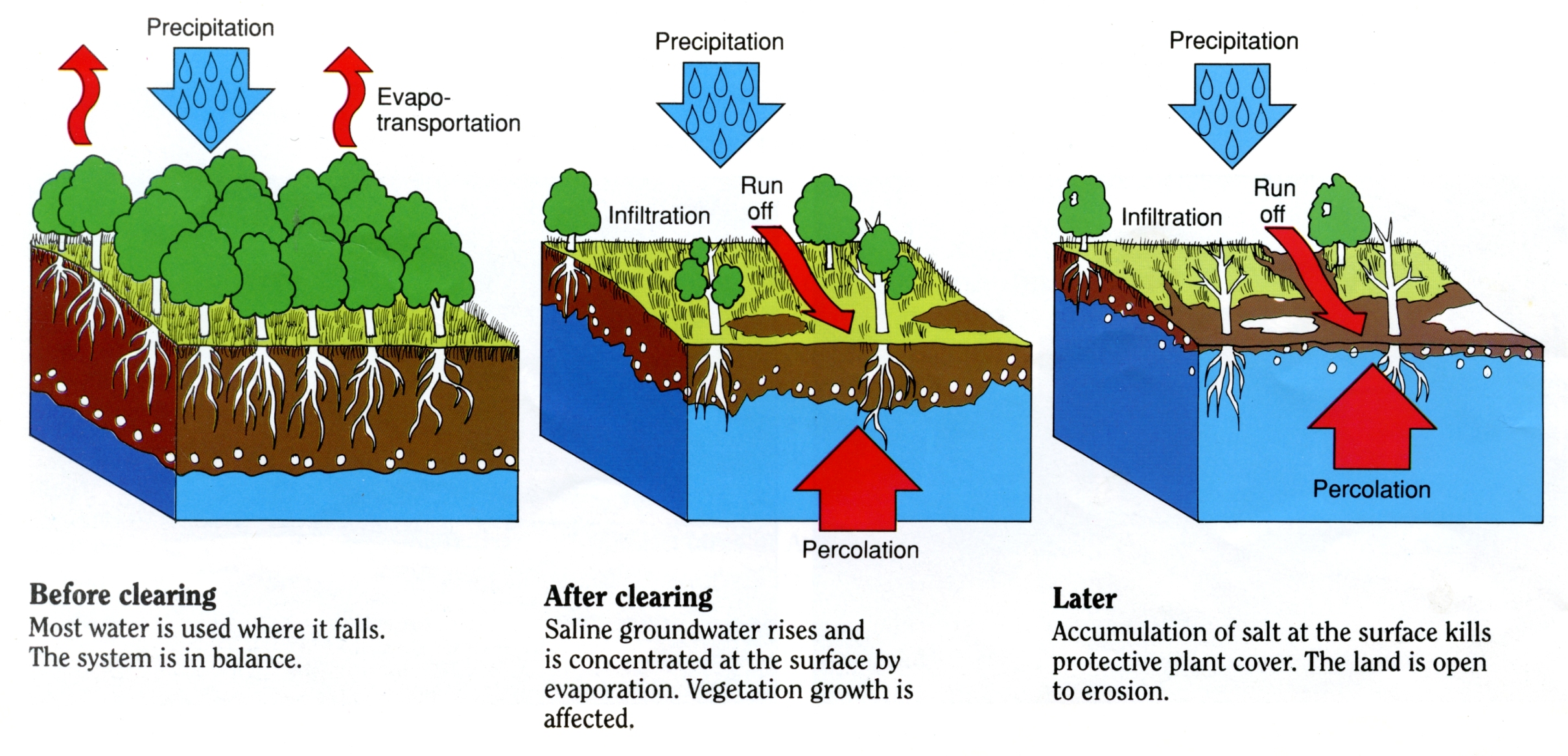Dryland Salinity
Extent of Dryland Salinity | Recognising Dryland Salinity | Technical Solutions for Dryland Salinity | Mapping and Monitoring Salinity Incidence
Dryland salinity is a problem that causes millions of dollars in lost productivity annually in the dryland (non-irrigated) agricultural areas of Victoria. Dryland salinity results from an imbalance in the hydrological cycle of the landscape. The extent of dryland salinity across Victoria is significant.
Dryland salinity describes an increasing concentration of salt in soils and in watercourses.
The Victorian landscape stores large quantities of soluble salts accumulated from past arid periods. Changes in land-use over the last 200 years have caused some redistribution of this salt, which started to become evident in the 1940's. Tree clearing and common agricultural practices, such as fallowed soil have caused groundwater levels to rise. The rising groundwater dissolves salt stored in soil and rock. Where the groundwater rises to within two metres of the ground surface, discharge of salty groundwater usually occurs to the soil. The result can be secondary or (i.e.) induced salinity.

Schematic diagram of changes to the distribution of salt in the landscape due to change in land-use (Department of Agriculture and Rural Affairs (1980). ‘Managing Salinity: Ensuring a Farming Future’. The State of Victoria).
Managing agricultural production in saline soils
Growing salt and waterlogging tolerant forage species is one solution to maintain agricultural production in salt affected areas or where saline water is used for irrigation. However, most commercially available forage species are sensitive to both salinity and waterlogging (refer Salinity Indicator Plants). There is a need to identify further plant species for saline areas that will provide both agricultural production and groundcover.
A recent national project acquired and systematically evaluated the salt and waterlogging tolerance of a wide range of native and introduced species of grasses, legumes, herbs and shrubs. The results were reported in:
Rogers ME, Craig AD, et al. (2005). ‘The potential for developing fodder plants for the salt-affected areas of southern and eastern Australia: an overview’. Australian Journal of Experimental Agriculture 45 (4), 301–329.
This article is available through the Australian Journal of Experimental Agriculture (external link).


